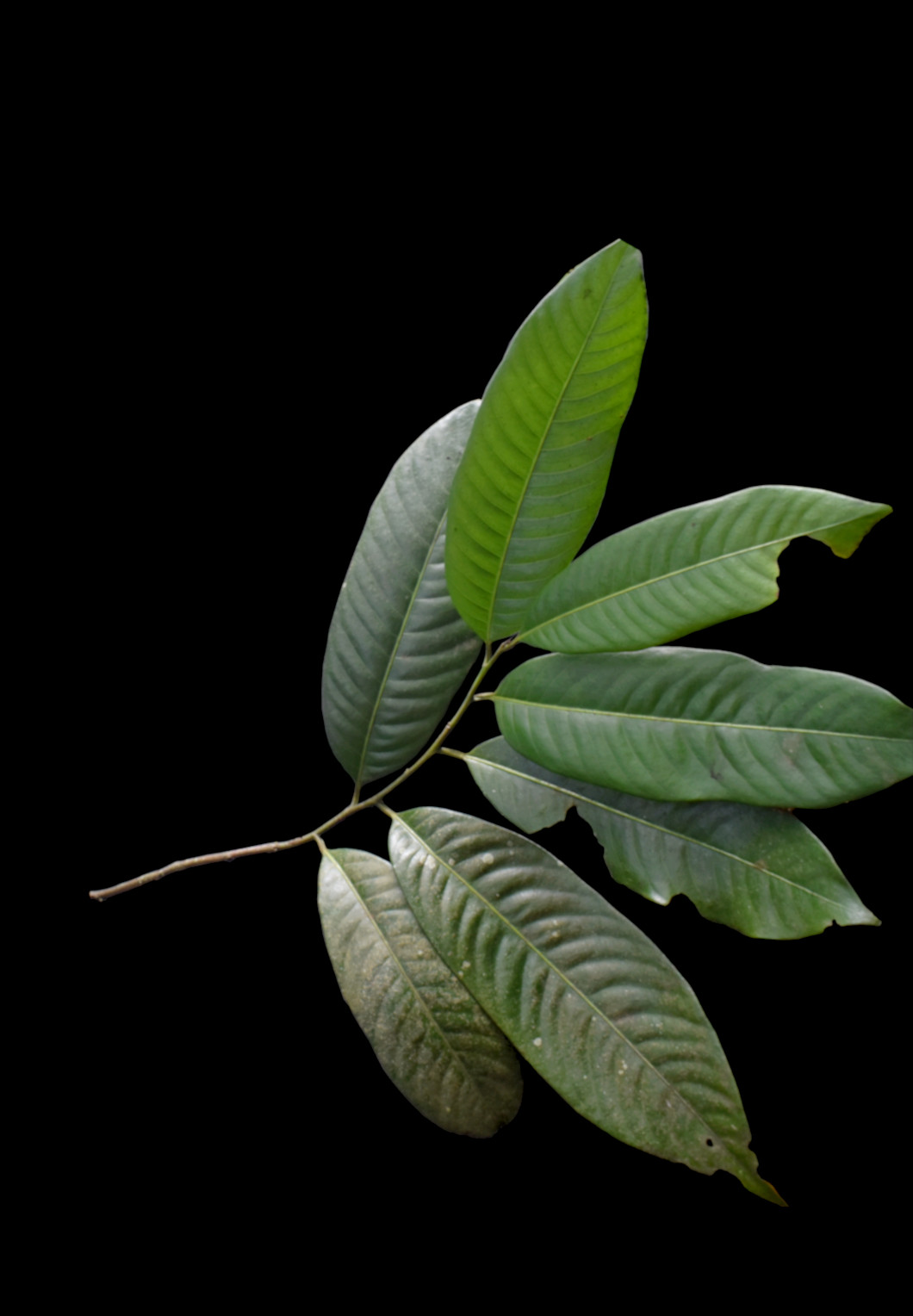Undappayin, Pathirippoovu

Scientific Name :
Myristica beddomei King
Synonym(s) :
Myristica dactyloides Gaertn.
Local/Common name(s) :
Undappayin, Pathirippoovu
Family :
Myristicaceae
Habit :
Tree
Flowering/Fruiting Time :
December-May
Habitat :
Evergreen and semi-evergreen forests
Endemic :
No
Status (IUCN) :
Distribution :
South India and Sri Lanka
Nativity :
Indigenous
Uses :
Medicine
Description (Morphology) :
Evergreen dioecious trees, to 25 m high, bark 10-14 mm thick, surface blackish-green, smooth, exfoliations small, exudation watery, red; branchlets glabrous except for terminal bud and inflorescence. Leaves simple, alternate, distichous, 12-25 x 4-10 cm, oblong or elliptic-ovate, apex acute, base acute, round or rarely cuneate, margin entire, glabrous, shining above and glaucous beneath, coriaceous; lateral nerves 10-25 pairs, pinnate, prominent, intercostae reticulate, faint; petiole 1-2.5 cm long, grooved above, glabrous. Flowers unisexual, white; male flowers 10-20 together in short axillary dense clusters; peduncle prominently marked with cicatrices of the bracts; pedicels slender, ferrugineous tomentose. Perianth thin, fleshy, rusty tomentose, connate into an urceolate tube, constricted above, suddenly expanded, breaking into 3 ovate, spreading acute lobes. Staminal column narrow to oblong, ferrugineous, included, produced beyond the anther; anthers 7-15, linear-oblong. Female flowers as in male, generally 3-4 in the heads; ovary superior, sessile, ovoid-globose, appressed pubescent, 1-celled, ovule 1; stigma oblique, 2-lobed. Fruit a capsule, 5-7.5 x 3.7-6 cm, ovoid, apiculate, grooved on one side along the suture, pericarp rufous pubescent when young, thick, succulent; seed one, ovoid; aril orange red, encircling the seed, deeply cut down into many lobes, each lanceolate at the apex into filiform segments.

